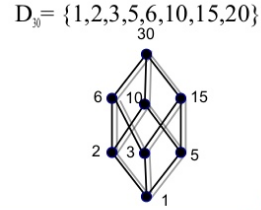(a)

(b)In a Complemented Lattice each element has at least one complemented.
(1) 1∨30 =30 1∧30 = 1 $\Rightarrow$ 1' =30 and 30'=1
(2) 2∨15 = 30 2∧15 = 1 $\Rightarrow$ 2'=15 and 15'=2
(3)3∨10 = 30 3∧10 = 1 $\Rightarrow$ 3'=10 and 10'=3
(4)5∨6 = 30 5∧6 = 1 $\Rightarrow$ 5'=6 and 6'=5
Here Every element has one element hence, it is a complemented Lattice.
(c)In a Distributive Lattice complement of an element if exists is unique i.e. each element has at most one element.
Here in D30, Every element has a unique complement. Hence, it is a Distributive Lattice.